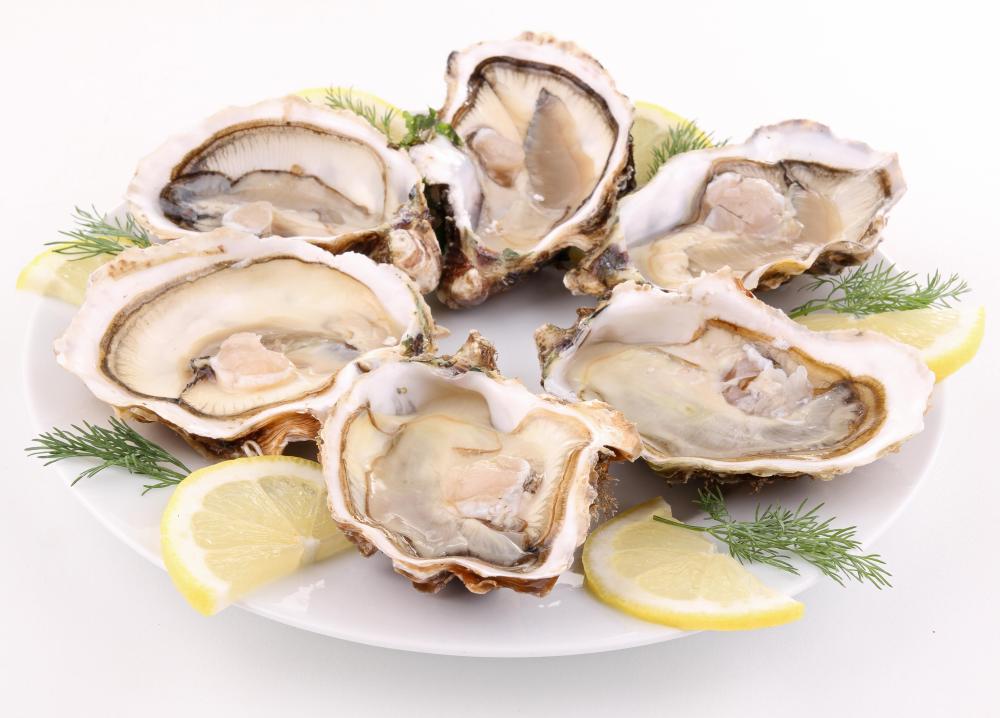At AllThingsNature, we're committed to delivering accurate, trustworthy information. Our expert-authored content is rigorously fact-checked and sourced from credible authorities. Discover how we uphold the highest standards in providing you with reliable knowledge.
What is a Bivalve?
A bivalve is a type of aquatic mollusk with a two-sided, symmetrical shell. Each side of the shell is a valve; hence gastropods, such as snails, are sometimes called univalves. Some common bivalve species include clams, oysters, and mussels. There are both freshwater and marine bivalve species.
Though bivalves are superficially similar to another group of aquatic animals, brachiopods, they have distinct anatomical differences. In a brachiopod, the two halves of the shell indicate the top and bottom of the animal's body, while in a bivalve, the two sides of the shell are the left and right halves. In addition, bivalves have much more morphological sophistication and diversity than brachiopods. For example, many have evolved to be mobile, whereas all brachiopods are sessile, or attached to the substrate.

The bivalve first appears in the fossil record around 520 million years ago, near the end of a period known as the Cambrian Explosion. Brachiopods appear earlier in the Cambrian period and are much more numerous than bivalve mollusks throughout the Paleozoic era. However, after 96% of brachiopod genera went extinct during the end-Permian extinction event marking the close of the Paleozoic era, bivalves began to dominate the scene. Bivalve species survived the extinction event better than most groups, with only 59% of bivalve genera dying out.

The impressive survival rate of bivalves during the end-Permian extinction event, as well as their later proliferation and current success, are probably related to their many sophisticated adaptations to marine life. Instead of using muscles to open and close their shells, as brachiopods do, bivalves use a muscle to close their shell, but open naturally when the muscle is relaxed due to the help of a ligament. This adaptation allows the bivalve to conserve energy. Bivalves lack a radula, the toothed tongue-like structure that other mollusks use to eat, and instead are filter-feeders.

Many bivalve species are mobile, though they move in a variety of ways. Some propel themselves by opening and closing, sucking in and expelling water. Others have a foot that helps them move and dig. Many bivalve species can burrow into sand, or even rock or wood, allowing them to evade predators. Some of the more mobile varieties become predators themselves.
Frequently Asked Questions
What exactly is a bivalve?
A bivalve is a type of mollusk characterized by a shell composed of two hinged parts or 'valves.' These aquatic animals include clams, oysters, mussels, and scallops. They are mostly found in marine and freshwater habitats, where they play essential roles in the ecosystem, such as filtering water and serving as a food source for other species.
How do bivalves feed and what do they eat?
Bivalves are filter feeders; they draw in water through their gills, trapping tiny food particles like plankton. Their gills have fine hairs called cilia that help to move the water and capture nutrients. This feeding process also benefits the environment by naturally purifying the water from organic matter and potential pollutants.
Can you tell me about the lifespan of bivalves?
The lifespan of bivalves varies widely among species. Some may live for only a few years, while others, like certain clams, can live for over a century. The ocean quahog (Arctica islandica) is renowned for its longevity, with one individual recorded at over 500 years old, according to research published in the journal 'Science.'
What are the main threats to bivalve populations?
Bivalve populations face several threats, including overfishing, habitat destruction, pollution, and climate change. Ocean acidification, a result of increased carbon dioxide levels, can weaken their shells, making them more vulnerable to predators and environmental stressors. Efforts to protect their habitats and regulate harvesting are crucial for their conservation.
How do bivalves reproduce?
Bivalves have diverse reproductive strategies. Many species release eggs and sperm into the water, where fertilization occurs externally. Others retain the eggs within their shells for internal fertilization. Some, like oysters, can even change sex during their lifetime to optimize reproductive success, ensuring the continuation of their species.
Are bivalves important to humans?
Yes, bivalves are highly significant to humans. They are a vital food source globally and contribute to the economy through fisheries and aquaculture. Bivalves also play a critical role in maintaining healthy aquatic ecosystems, which in turn supports commercial and recreational fishing industries, as well as tourism in coastal areas.
AS FEATURED ON:
AS FEATURED ON:













Discuss this Article
Post your comments